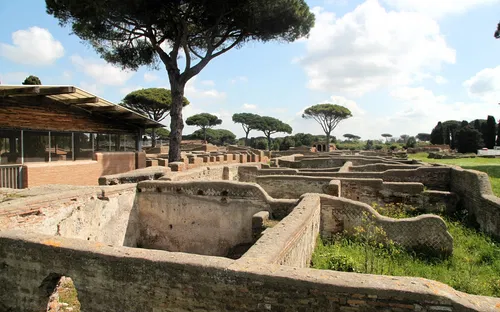Archaeological Park of Ostia Antica and its collection
Ostia, located on the coast of the Tyrrhenian Sea in ancient Latium, Italy, was an important port city for ancient Rome and is believed to be one of its first colonies. This historical significance makes it a fascinating destination for those interested in the history of the Roman Empire.
Development of Ostia under Tiberius
The city of Ostia saw significant development during the 1st century, primarily under the rule of Tiberius, who ordered the construction of the first forum. This period of growth and architectural development is evident in the ruins that can be explored today.
Daily Life in Ancient Ostia
Archaeological discoveries in Ostia provide a glimpse into the daily life of its ancient inhabitants. Public latrines, a large theater, public baths, and a fire service are among the facilities that have been unearthed. These findings offer visitors a unique opportunity to understand the social and cultural aspects of life in ancient Ostia.
Specialized & Alternative Archaeology Historic house

